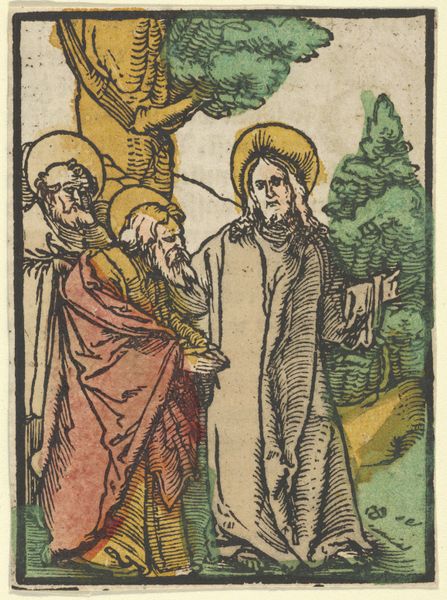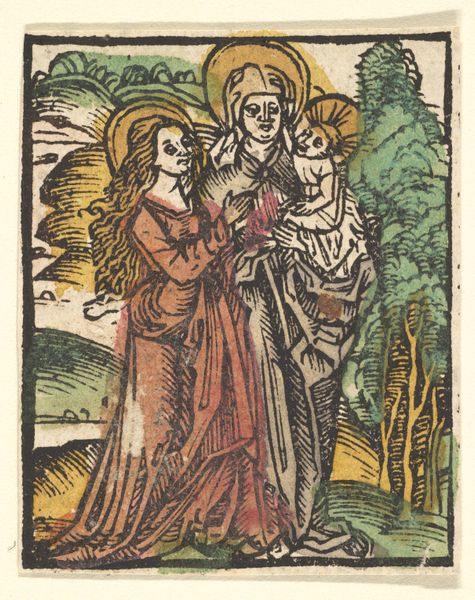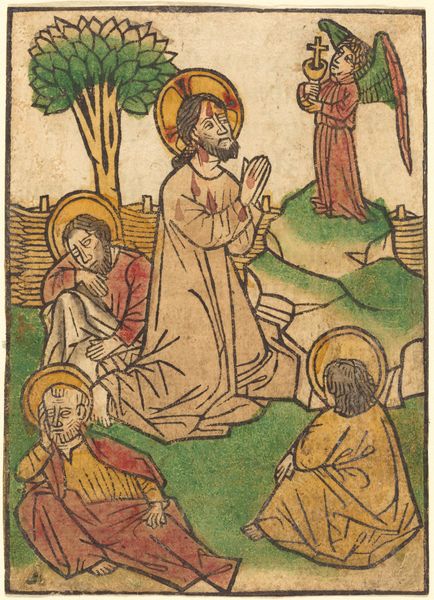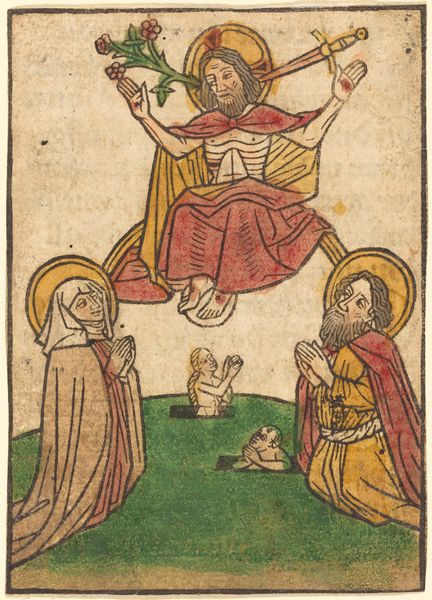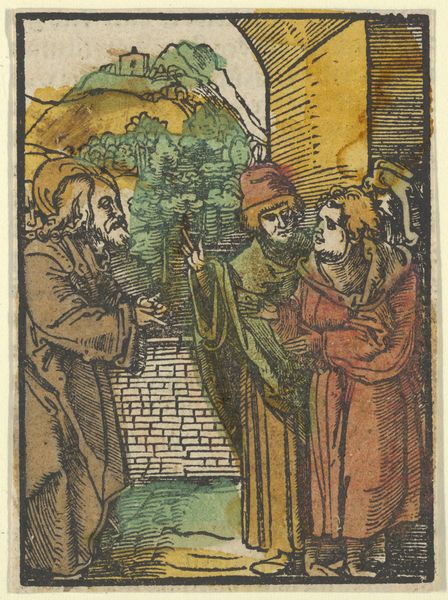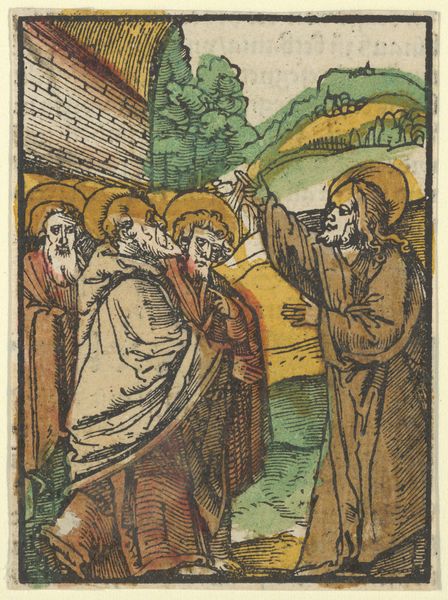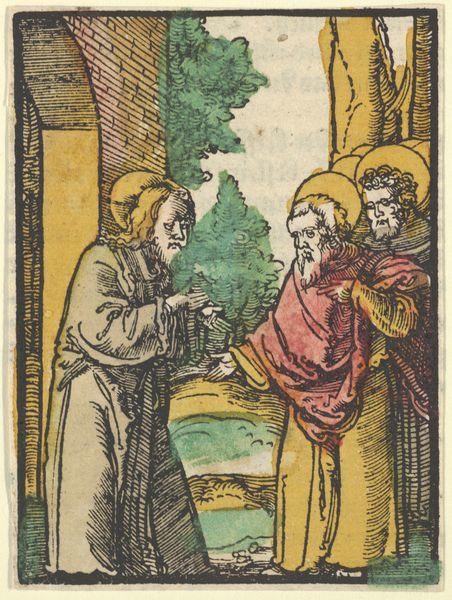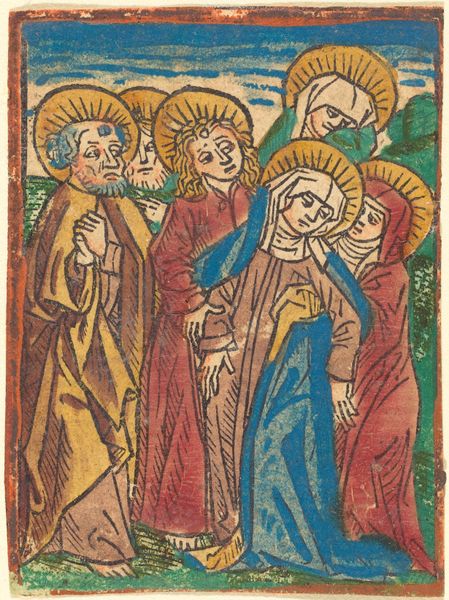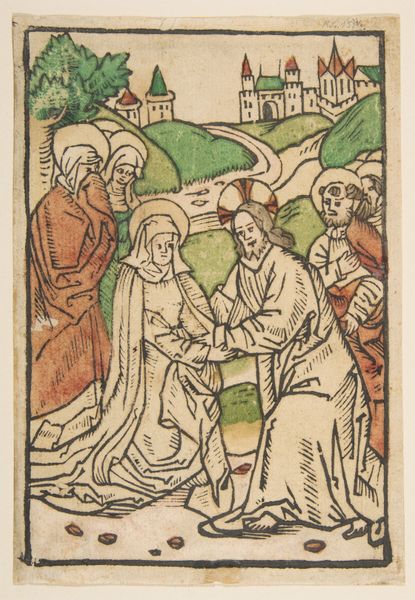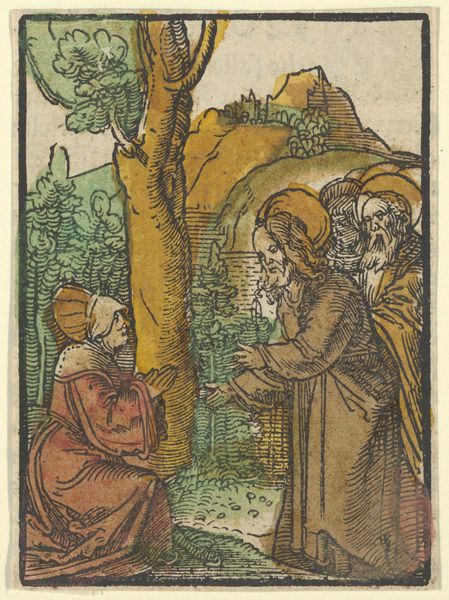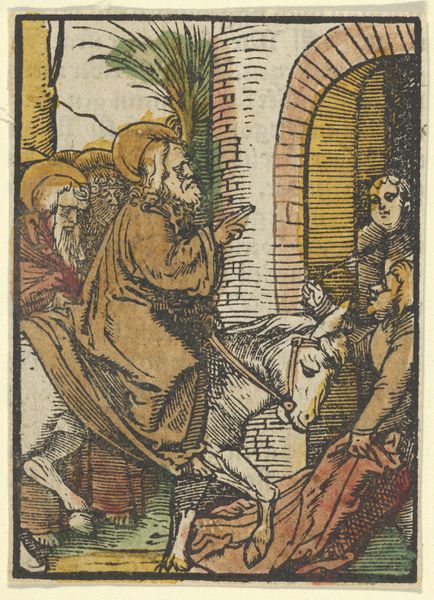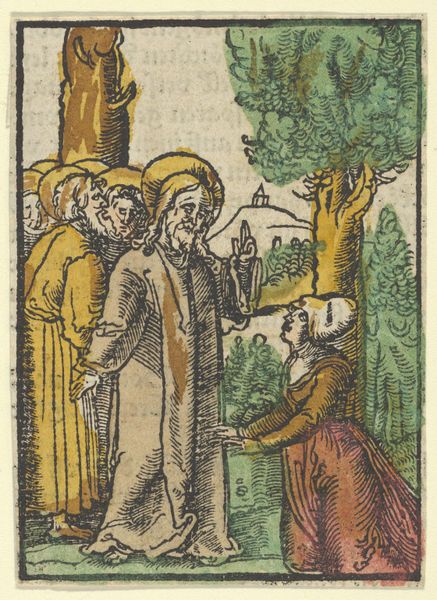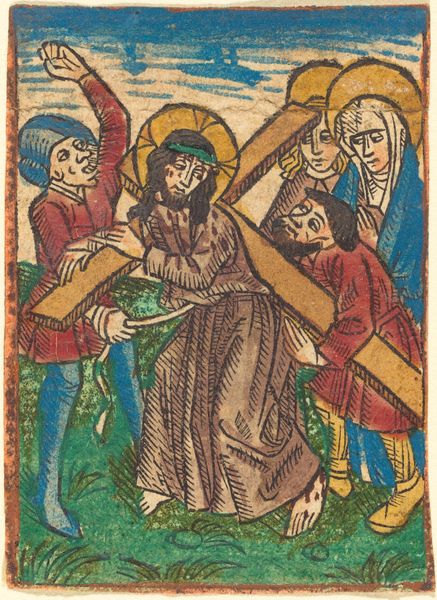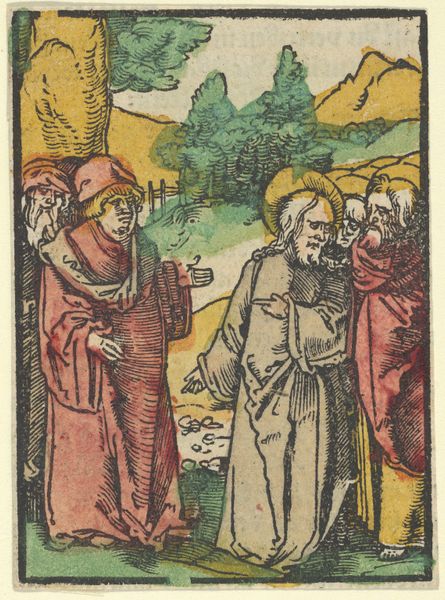
Dimensions: Sheet: 3 11/16 × 2 11/16 in. (9.4 × 6.8 cm)
Copyright: Public Domain
Editor: This is "The Incredulity of Thomas" from Das Plenarium, a woodcut made around 1517 by Hans Schäufelein. It's interesting, kind of raw in its depiction. What strikes me most is the…hesitancy, maybe? Thomas is so unsure. What do you see in this piece? Curator: That hesitancy you mention is powerful, especially when we consider the historical and social context. Here, faith is depicted not as blind acceptance but as a struggle, a very human experience of doubt. How does this contrast with the societal expectations of religious devotion in the 16th century, don't you think? Editor: Absolutely! It makes me think about the Reformation brewing at the time. Questioning authority, demanding proof… Curator: Precisely. Schäufelein's art becomes part of this broader challenge to established power structures. The very act of depicting doubt, particularly within a sacred narrative, could be viewed as subversive. Do you see any specific artistic choices that reinforce this sense of unease or challenge? Editor: The expressions are definitely intense, especially on the faces of the onlookers. And the crude lines of the woodcut itself. It feels… less polished than other religious art from the period. Curator: That rawness, that rejection of idealized forms, connects to broader trends of the time. It can be related to the art and social commentary and reflects the tensions that exist around faith, doubt, and social upheaval. Perhaps a conscious choice to align the work with those experiencing genuine uncertainty. Editor: That's a great way to look at it. I never thought about religious art as something that could be…activist, I suppose. Curator: Art is never neutral, and these choices in style and content reveal the complex, ever-shifting landscape of identity and power during a pivotal point in history. Considering context is crucial to a deeper understanding. Editor: I learned so much about how art, even religious art, is entangled with history and the questioning of power structures. Curator: And that’s why thinking about the world around it and who it affects makes all the difference.
Comments
No comments
Be the first to comment and join the conversation on the ultimate creative platform.
